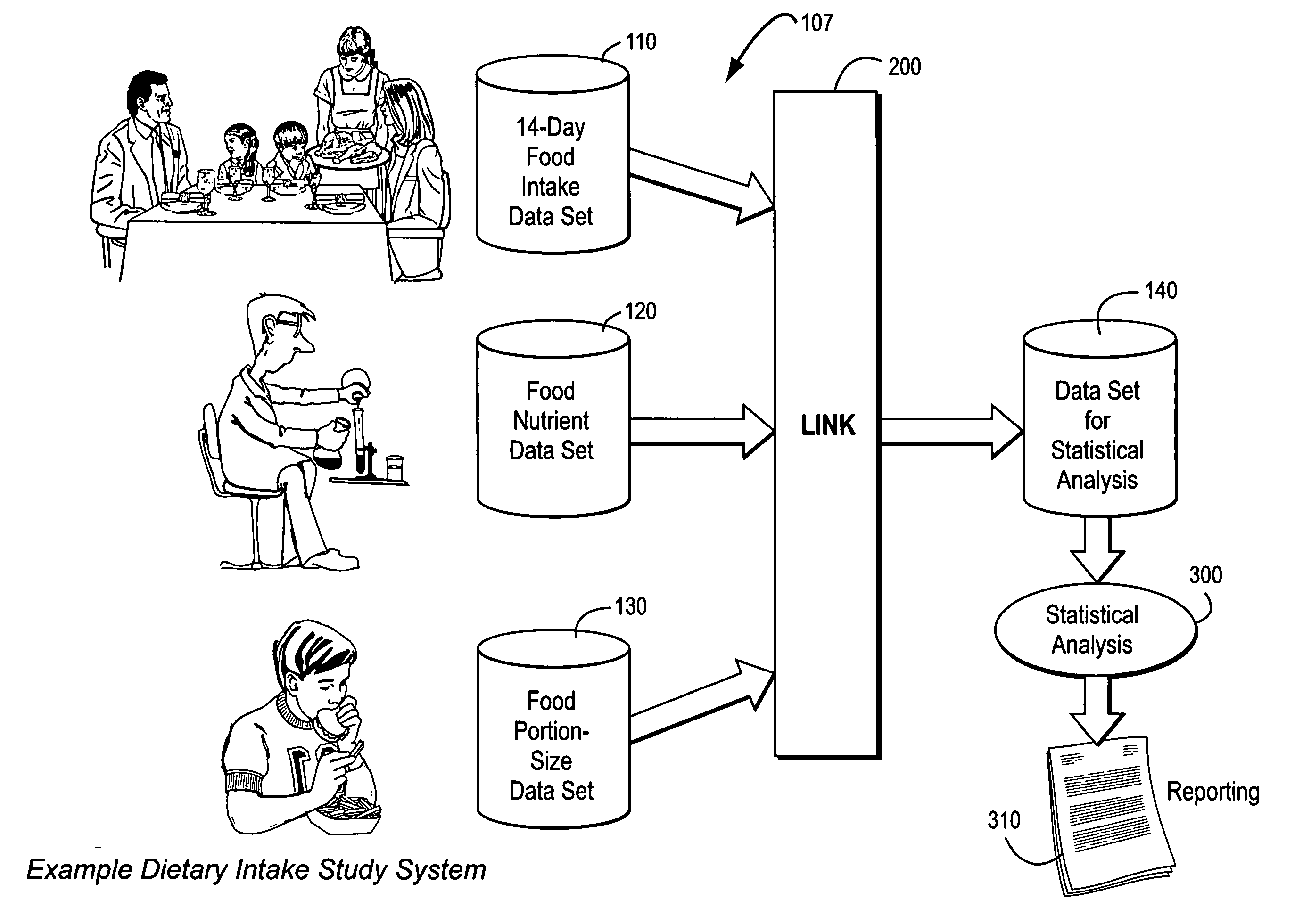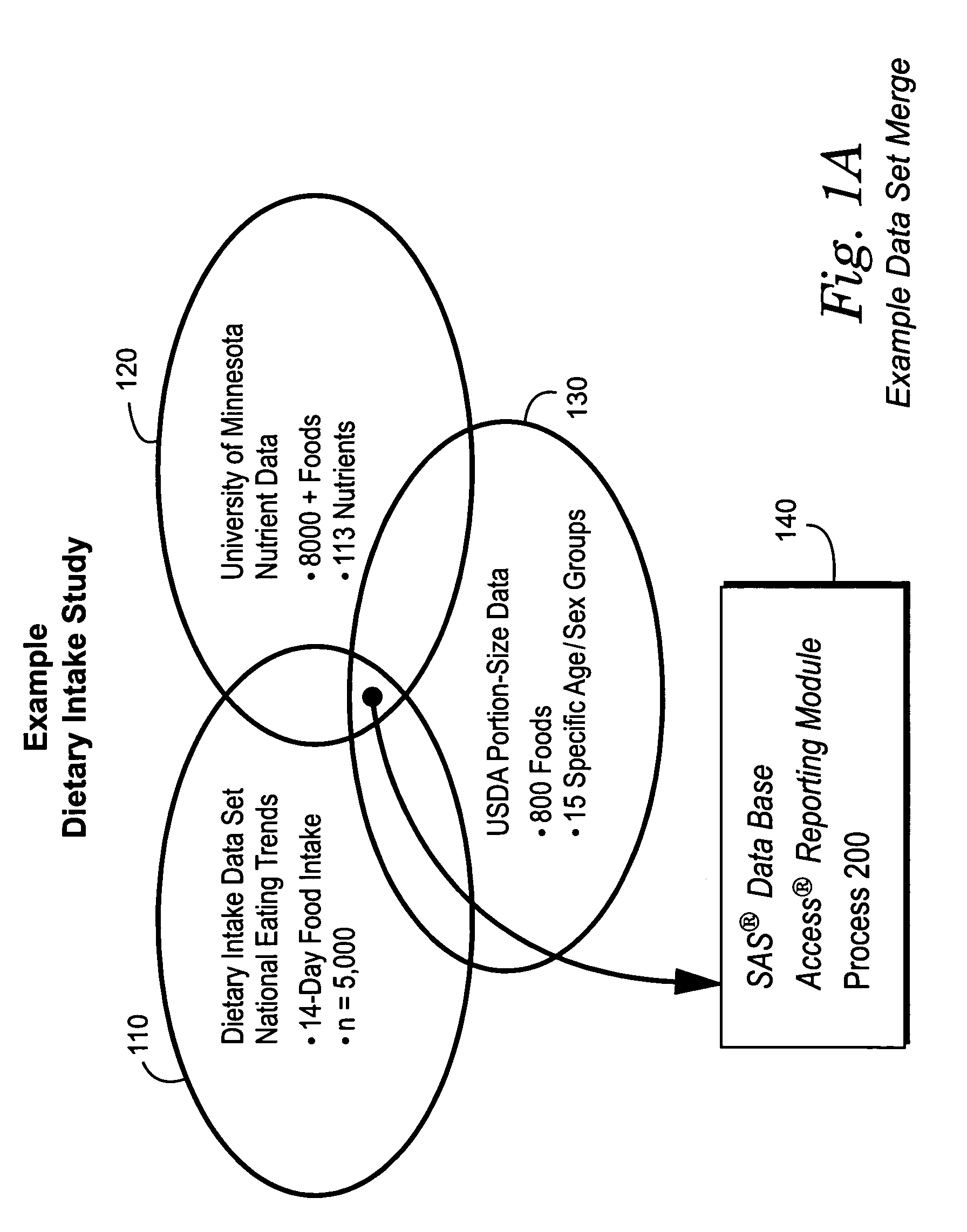Systems and methods for determining nutrients within dietary intake
a technology of dietary intake and nutrients, applied in the field of systems and methods for determining nutrients within dietary intake, can solve the problems of compromising the accuracy of recording, affecting the accuracy of dietary intake, and not adequately addressed by the npd/net data set, so as to achieve more accurate dietary intake results, improve the accuracy of dietary intake, and improve the effect of dietary intak
- Summary
- Abstract
- Description
- Claims
- Application Information
AI Technical Summary
Benefits of technology
Problems solved by technology
Method used
Image
Examples
example system implementation
[0104]FIG. 4 shows an example block diagram of an exemplary and illustrative non-limiting implementation of system 100 shown in FIG. 1. Referring to FIG. 4, the food intake data set 110, nutrition data set 120 and portion size data set 130 are preferably inputted to system 100 and stored on one or more mass storage devices 152. As shown in FIG. 5, the mass storage device 152 (which contains the various data sets 110, 120, 130) can be inputted in a variety of ways including, for example, supplying a portable mass storage device such as a compact disk ROM (154) or other optical magnetic (155) or other mass storage device 152, and / or the data sets may be transmitted in whole or in part over a computer network 158 such as the Internet.
[0105]In the example embodiment 100, mass storage device 152 in FIG. 4 (which may comprise one or an array of individual magnetic disk drives, for example), also stores additional data structures including, for example, a recipe file 145, a food-portion li...
PUM
 Login to View More
Login to View More Abstract
Description
Claims
Application Information
 Login to View More
Login to View More - R&D
- Intellectual Property
- Life Sciences
- Materials
- Tech Scout
- Unparalleled Data Quality
- Higher Quality Content
- 60% Fewer Hallucinations
Browse by: Latest US Patents, China's latest patents, Technical Efficacy Thesaurus, Application Domain, Technology Topic, Popular Technical Reports.
© 2025 PatSnap. All rights reserved.Legal|Privacy policy|Modern Slavery Act Transparency Statement|Sitemap|About US| Contact US: help@patsnap.com



